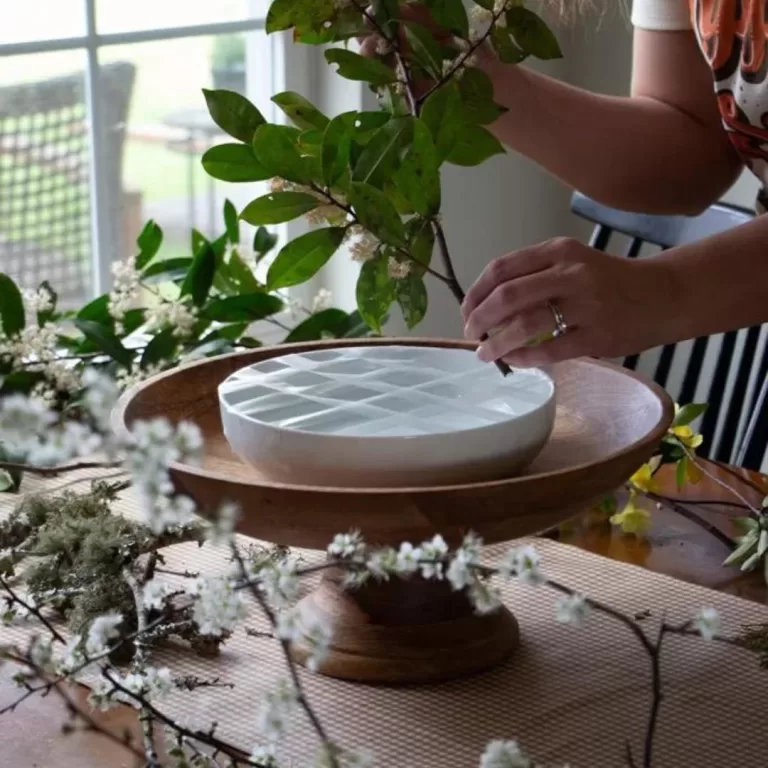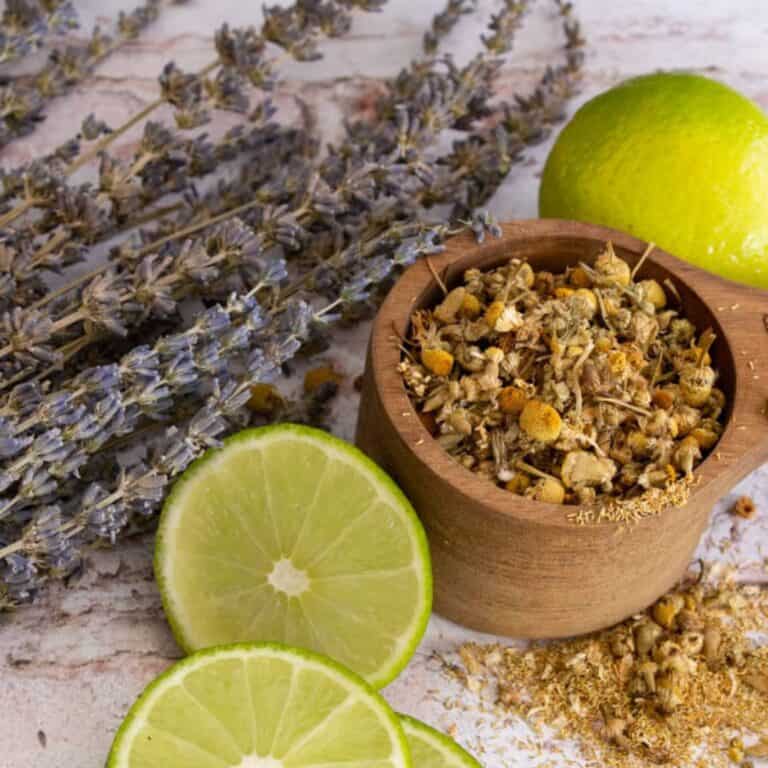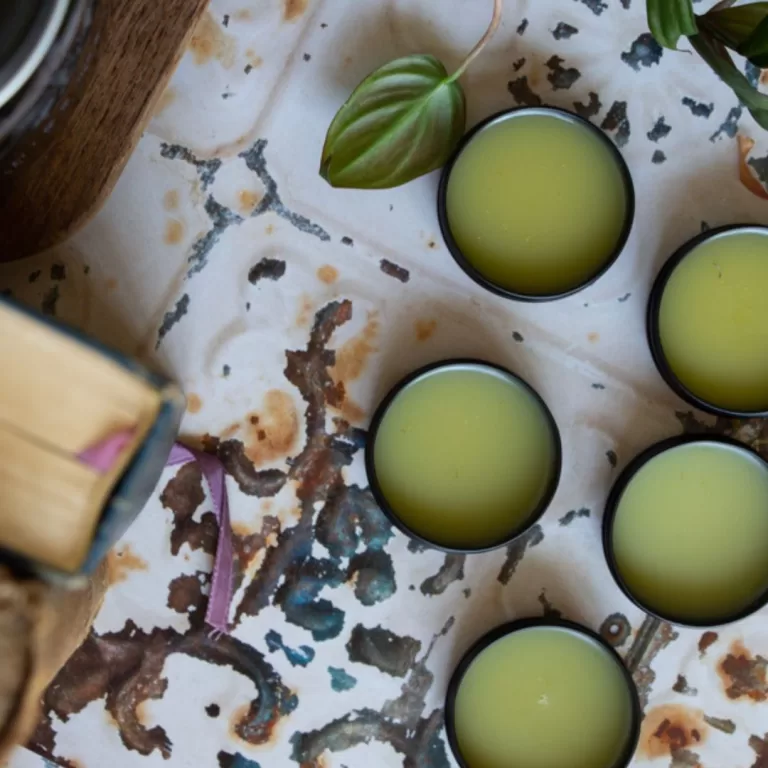Healing Herbal Bath Tea with Comfrey
Hey, bath lovers! If you’re looking to take your self-care routine to the next level, have you considered adding herbal bath teas to your bath time ritual? Today, we’re diving into the world of comfrey bath tea, a powerful natural remedy that can help soothe sore muscles, reduce inflammation, and promote relaxation.
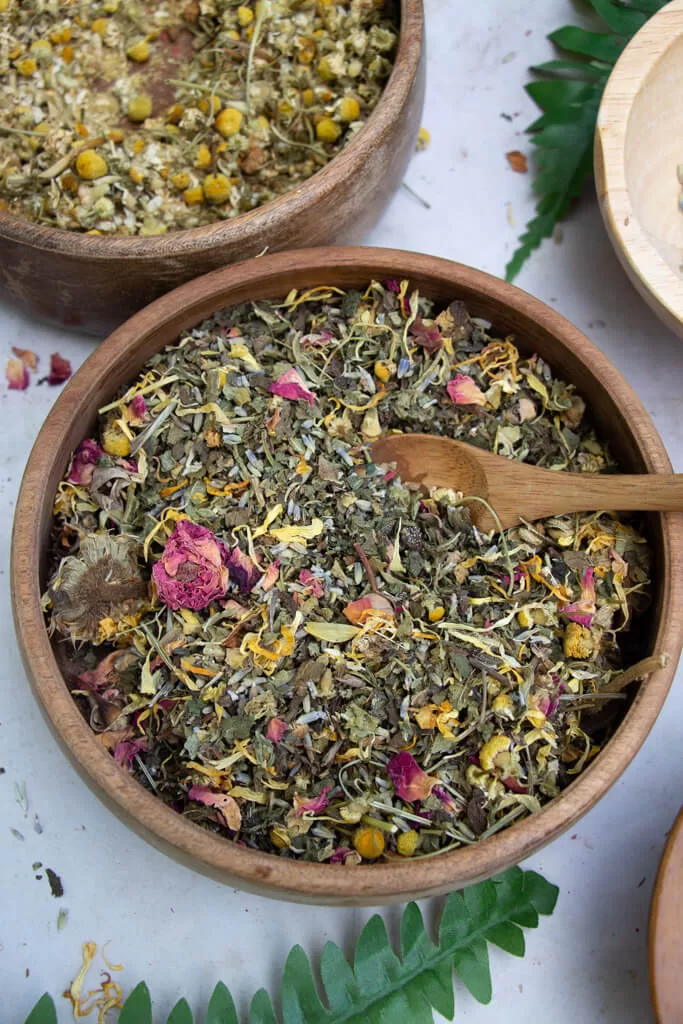
People have used comfrey as a medicinal herb for centuries, and when you infuse it in a warm bath, it can work wonders for your body. Comfrey is often used topically as a salve to soothe sore muscles and joints and promote tissue repair. When comfrey is added to a bath, it can help to ease muscle soreness, reduce inflammation, and promote relaxation. It is powerful enough on its own, but I wanted to make an extra luxurious bath, so I added more of my favorite herbs as well.
Medical disclaimer: I am not a medical professional and I am not claiming that these herbs are a substitute for professional care. Always consult a professional for medical advice when starting natural remedies at home. These are just things that I use and love in my own home. Use comfrey with caution and knowledge of the herb.
What is a Bath Tea?
To make a bath tea, you infuse herbs, flowers, and other natural ingredients in hot water. Bath teas resemble herbal teas that you drink, but you add them to a bath instead of brewing and consuming them orally.
Comfrey Bath Tea Recipe

Ingredients:
My favorite place to buy herbs online is Starwest Botanicals due to their ethical sourcing and commitment to sustainability. Each of the links below is an affiliate link, where I make a small commission from your purchase, at no additional cost to you.
Optional Addition: plantain leaf, pure essential oils, sea salt, baking soda
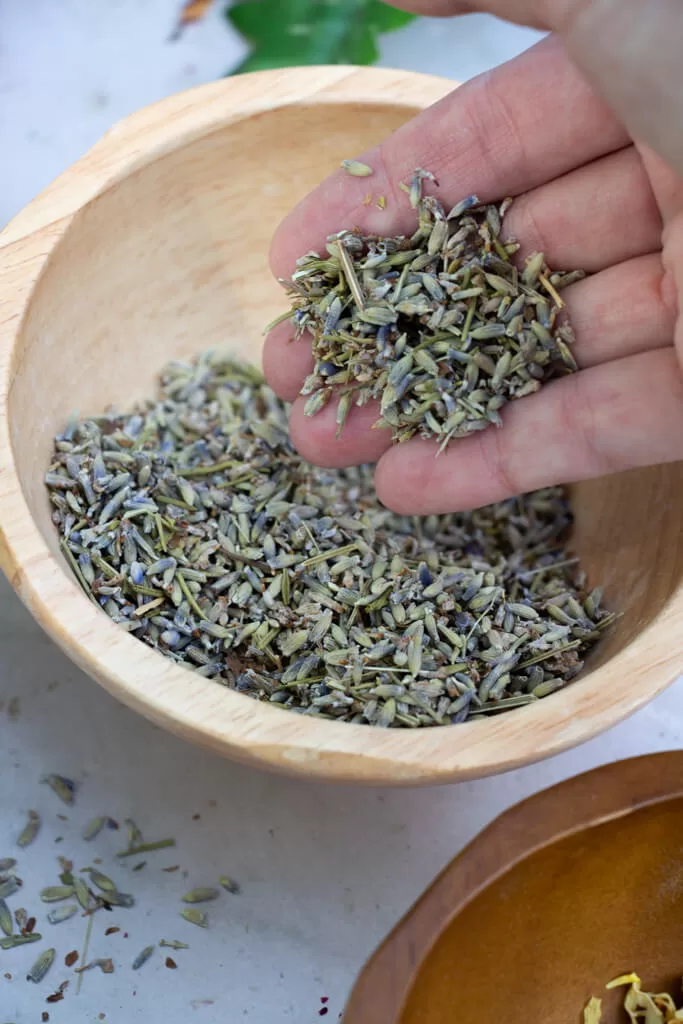
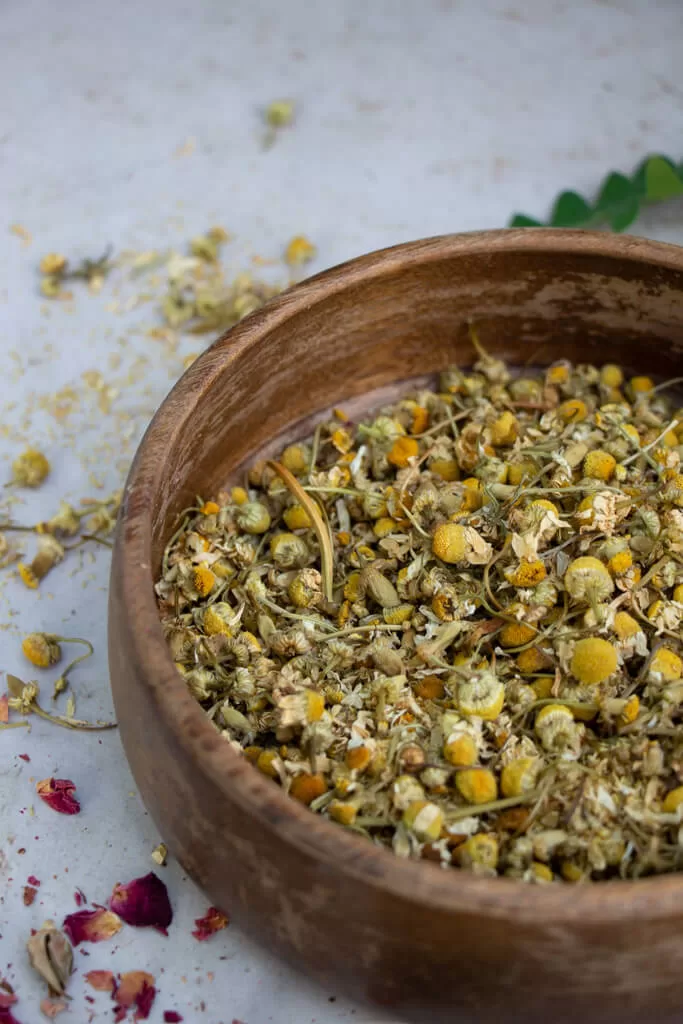
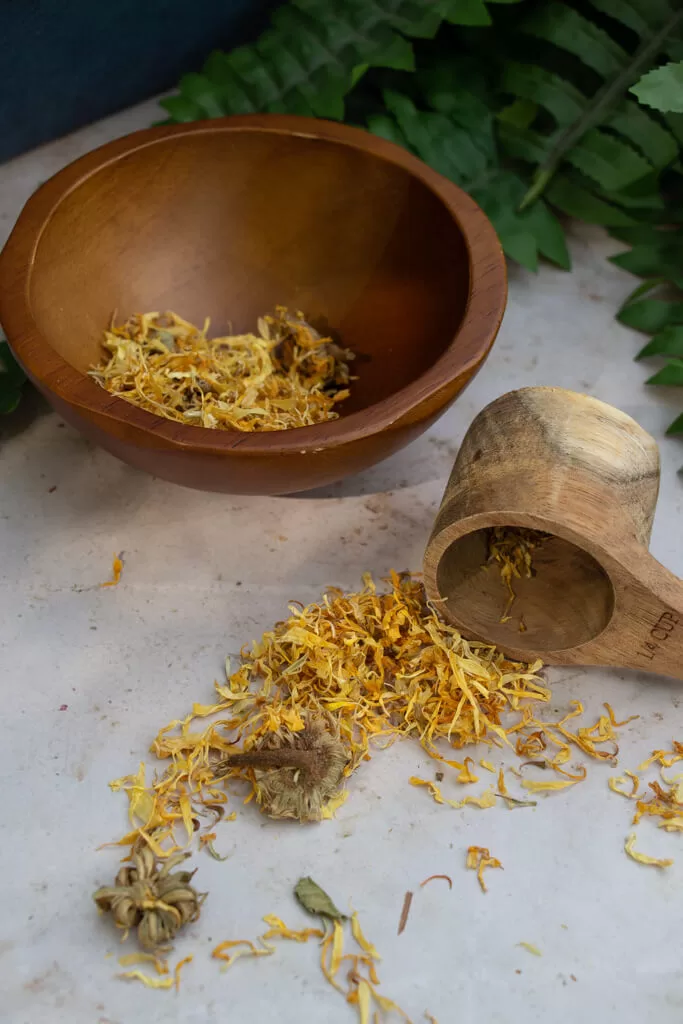


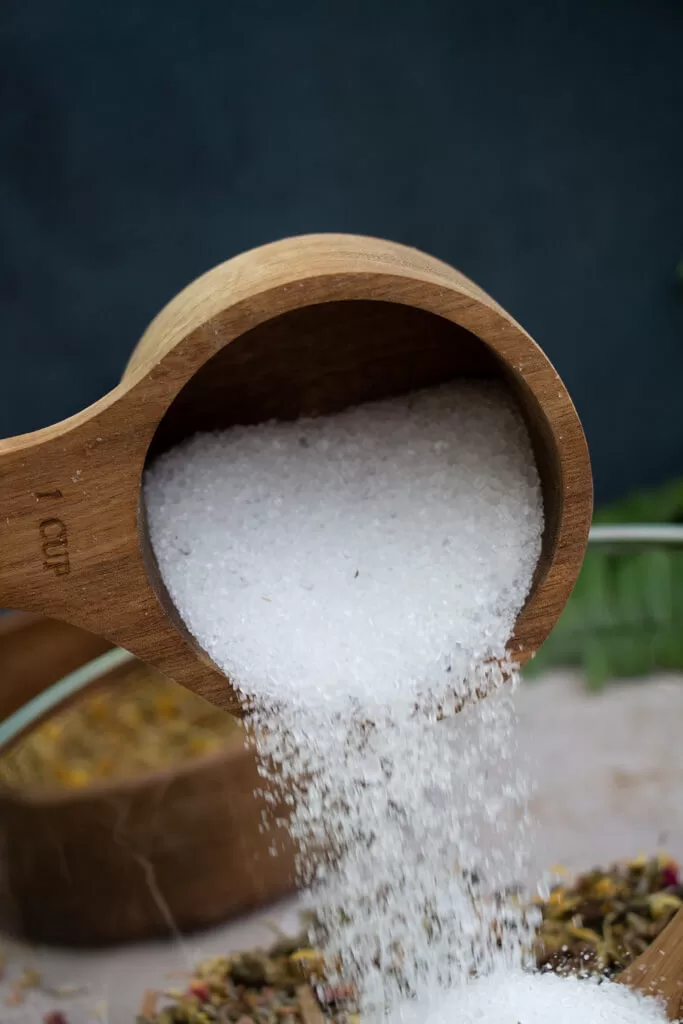
As an Amazon Associate, I earn from qualifying purchases. Please visit my privacy + disclosure page for more details.
Supplies:
Instructions:
Yield: 1.5 pints, About 4-6 baths
1.In a large mixing bowl, combine the dried comfrey leaves, lavender flowers, chamomile flowers, calendula flowers, rose petals, and Epsom salt.

2. Mix well to ensure that the ingredients are evenly distributed.

3. Transfer the mixture to an air tight container.
4. Add desired amount of herbs (I like to use about 1/2 cup at a time) in tea bag or infuser. Alternatively, you can simply add the loose herbs directly to the bathwater. This method may be a bit messier than using a bag, but it allows the herbs to float freely in the water and release their essential oils more fully (and it is kind of magical).
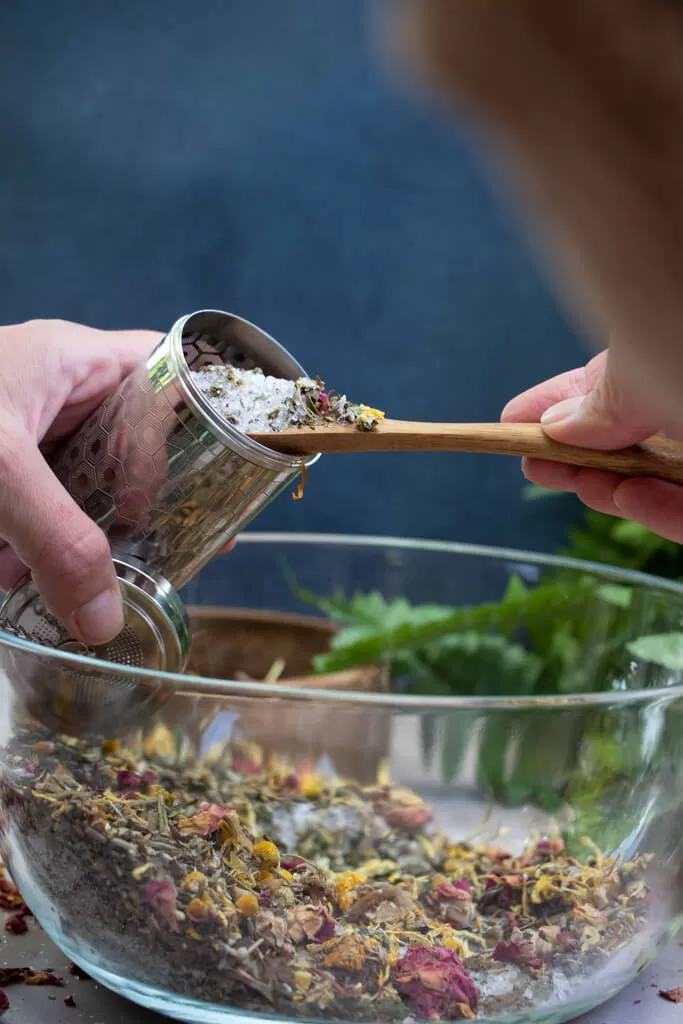

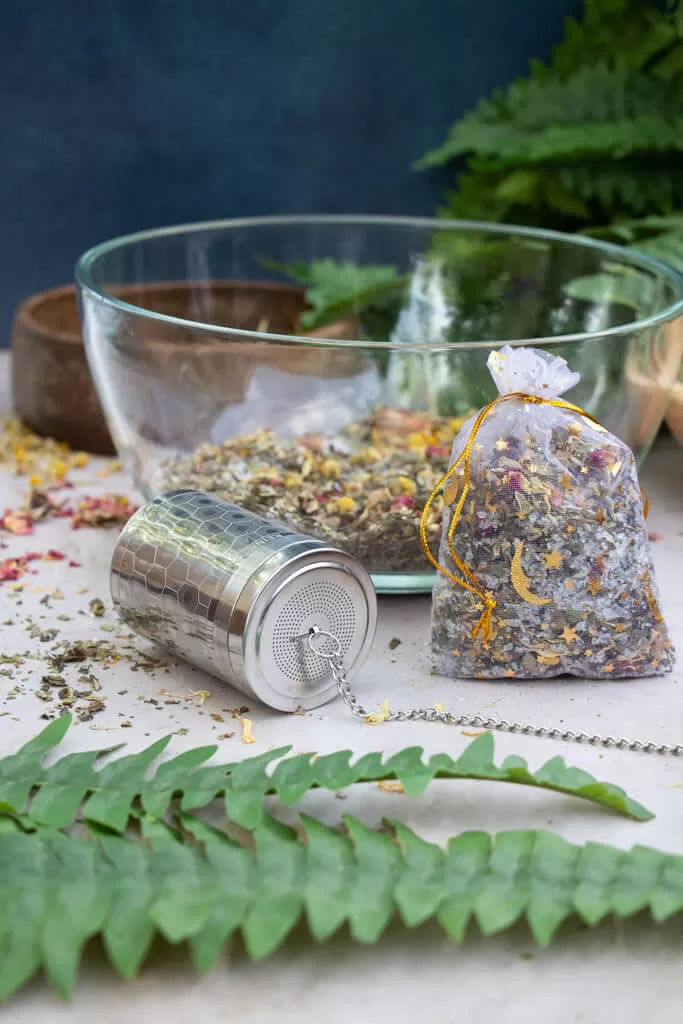
5. You can put it right in the hot bath water or hang from the faucet.
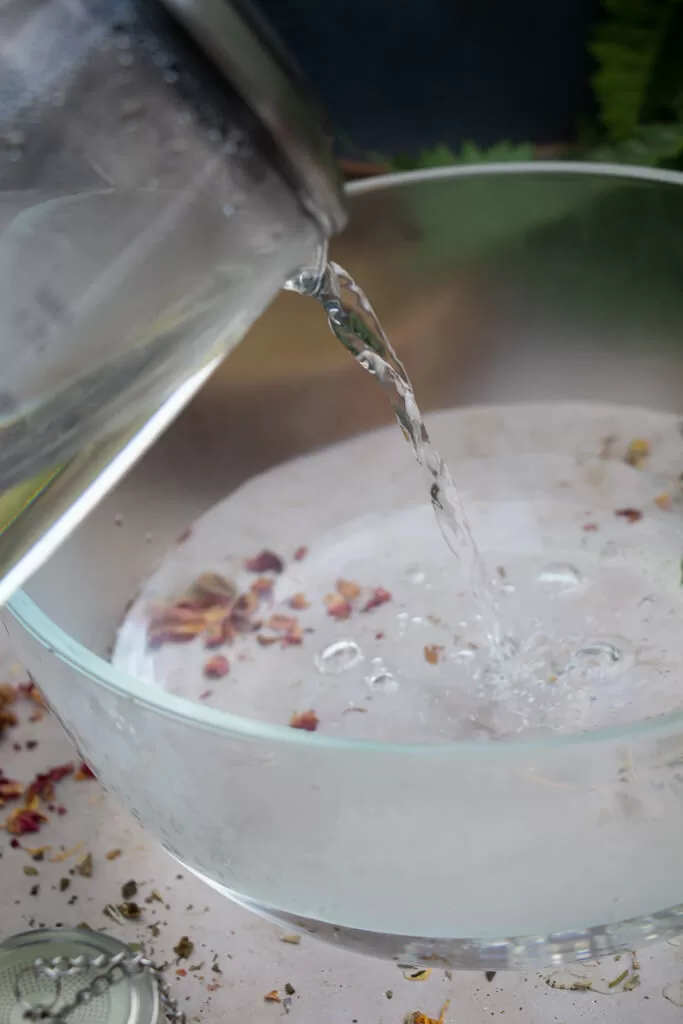

6. Let the herbs steep right in the bath. You can compost or discard herbs once used.
7. Soak your whole body in the bath for at least 30 minutes, allowing the healing properties of the herbs to penetrate your skin.
Store mixture in an airtight container for up to 1 year for maximum freshness.
Use and Safety
Use Comfrey in moderation (Use in bath no more than once or twice a week).
Comfrey contains pyrrolizidine alkaloids, which can be toxic in large amounts, and overuse or prolonged exposure to comfrey may cause skin irritation, liver damage, or other health issues. Do not use comfrey on open wounds or broken skin. As with any new skincare or wellness product, it’s always best to start with a small amount and pay attention to how your body responds before increasing the frequency of use.

Common Uses for Comfrey
- Wound healing: Comfrey has been traditionally used to speed up the healing of bruises, and wounds. The herb contains allantoin, a compound that is believed to promote cell growth and repair, making it beneficial for healing wounds.
- Sitz bath: As part of the wound healing process, comfrey is often used in sitz baths, along with raspberry leaf and witch hazel, for postpartum care (be sure to check with your doctor or midwife on this one).
- Pain relief: Comfrey is known for its analgesic properties, which make it useful for reducing pain and inflammation in the body. The herb is often used to treat conditions such as arthritis, back pain, and sprains.
- Skin care: Comfrey is used in skin care for its moisturizing and soothing properties. The herb can help to soothe dry, irritated skin and is often used in creams, lotions, and balms.
Bath Tea Herbal Benefits
Comfrey
Comfrey is a perennial herb that has been used for centuries as a natural remedy for a variety of ailments, including joint pain, muscle soreness, and inflammation. The active compounds in comfrey, such as allantoin and rosmarinic acid, are believed to help reduce inflammation and promote tissue repair, making it a great herb to use for soreness and minor injuries. However, you should use comfrey with caution as it can be toxic if ingested or used in large amounts.
Lavender
Lavender is a well-known herb that is often used in aromatherapy and natural medicine for its calming and relaxing properties. It contains compounds such as linalool and linalyl acetate, which are believed to have analgesic and anti-inflammatory effects. When used in a bath, lavender can help to ease sore muscles and reduce tension in the body.
Chamomile
Chamomile is another herb that is known for its calming and anti-inflammatory properties. Its active compounds, such as chamazulene and bisabolol, may help reduce inflammation and promote relaxation. Chamomile is often used to treat sore muscles, menstrual cramps, and other types of pain.
Calendula
Calendula is often used in natural medicine for its anti-inflammatory and healing properties. Its active compounds, such as flavonoids and triterpenoids, may help reduce inflammation and promote tissue repair. Calendula is often used topically to soothe minor wounds, burns, and rashes, making it a great herb to use for soreness and skin irritation.
Rose Petals
Rose petals are not only beautiful, but they also have a number of health benefits. They contain compounds such as anthocyanins and flavonoids, which have anti-inflammatory and antioxidant effects. When used in a bath, rose petals can help to soothe sore muscles and reduce inflammation in the body.
Epsom salts also have benefits for the body! According to the Cleveland Clinic, Epsom salts promote muscle relaxation, stress relief, detoxification, skin care, and pain relief.
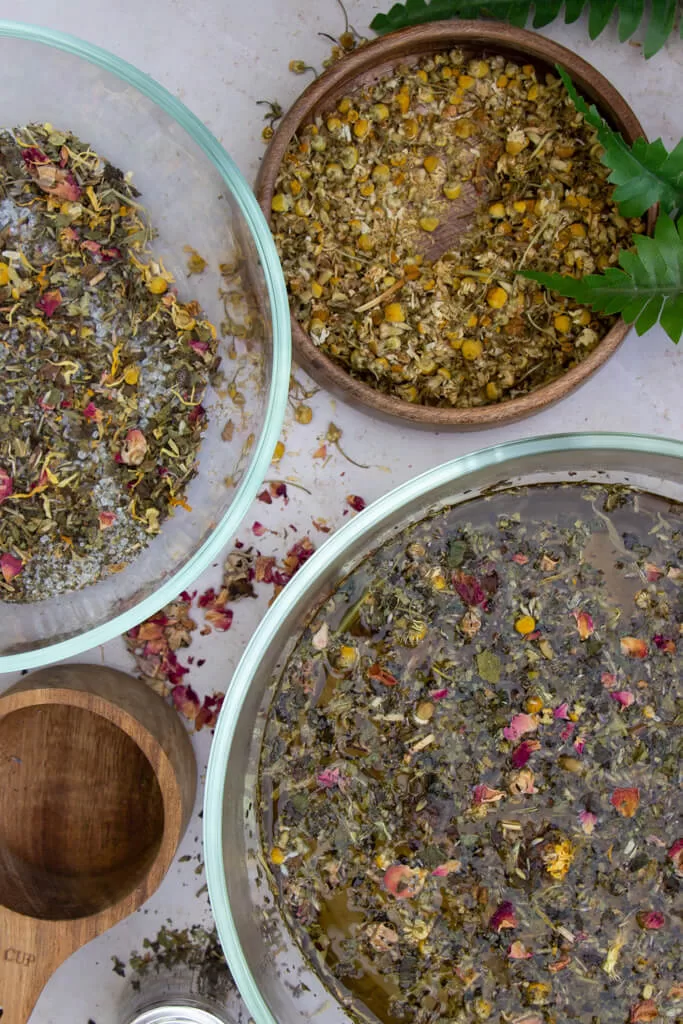
Alternate Use: Comfrey Compress
Soak a towel in this hot tea and use as a hot compress on a sore muscle or joint (not for use on open wounds). Use for up to 20 minutes at a time, reheating the tea and cloth as needed to improve circulation and relieve tension.
Incorporating beneficial herbs like comfrey into your bath time routine can be a great addition to your self-care practice. Whether you use it as a bath soak or a hot compress, this powerful herb can provide a range of benefits for your body and mind. So next time you’re in the mood for some serious pampering, consider brewing up a batch of comfrey bath tea and letting its healing properties work their magic.
Looking for another bath DIY project?
If you are interested in having a cup of tea along with your hot bath, I also have an entire series on herbal tea blends!
The Plant Wonder Collective
This post is made as a part of the Plant Wonder Collective, connecting the community to nature through food, drink, play, garden, medicine, magic, and art! Follow @plantwondercollective on Instagram for seasonal inspiration, celebrating a new plant each month!
If you make this comfrey bath tea, tag me in a photo on Instagram! I’d love to see your bath blend packaging ideas!
Pin Comfrey Bath Tea for Later!
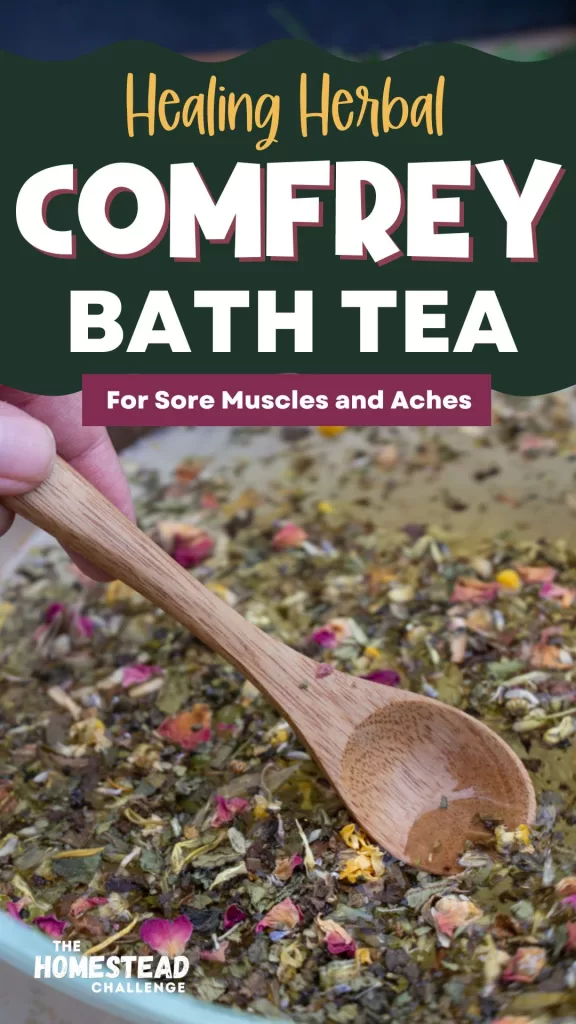

About the Author:
I’m Brittany, totally modern and mainstream turned crunchy mama!
Read more here about how I went from a totally incompetent cook and hyper-consumer to striving to live a more meaningful life from scratch.
I can’t wait to share my modern homesteading journey with you and I hope I inspire you to join along!


